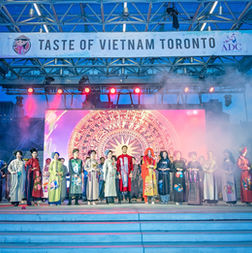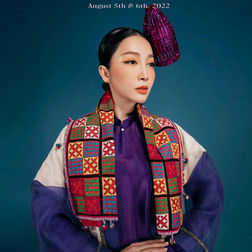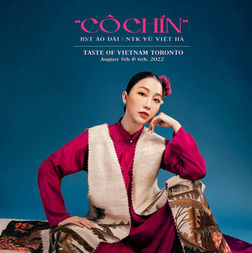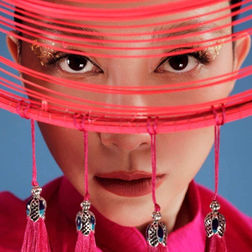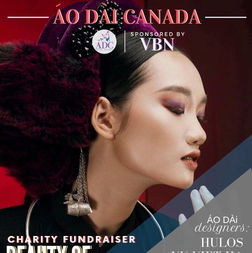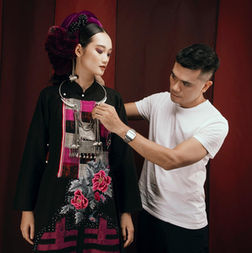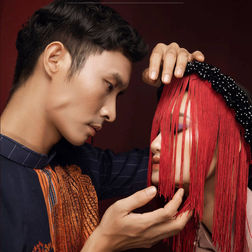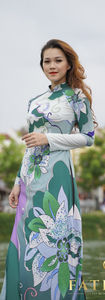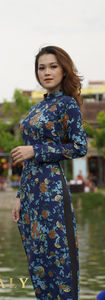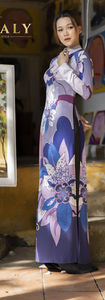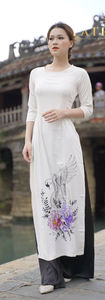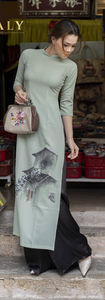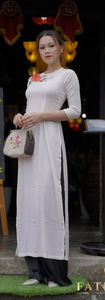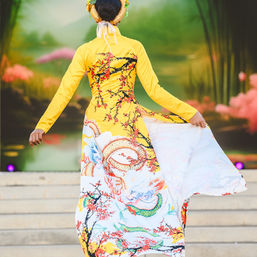

Ao Dai

I. The History of Ao Dai in Vietnam
1. Early development and emergence (1744 - 1930s)
The Ao Dai is a traditional Vietnamese garment that has become an iconic symbol of Vietnamese culture. Its history can be traced back to the early 18th century during the reign of the Nguyen Lords, who ruled over southern Vietnam. The Nguyen Lords introduced a new style of clothing that consisted of a long, flowing tunic and loose pants, which was designed to provide more comfort and freedom of movement for the wearer.
2. The Ao Dai evolves (1930s - 1950s)
Over time, the Ao Dai evolved to reflect the changes in Vietnamese society and culture. In the early 20th century, Vietnam underwent a period of modernization and Westernization under French colonial rule, and the Ao Dai was adapted to include elements of Western fashion such as tighter fitting designs and higher necklines. This new style of Ao Dai became popular among Vietnamese women, who saw it as a symbol of their modernity and independence.

3. Ao Dai during war and division (1950s - 1975)
During the Vietnam War, the Ao Dai continued to evolve as women sought to adapt the garment to the realities of wartime. Some women shortened the tunic to make it more practical for working in the fields, while others added pants underneath for added protection. Despite the difficult circumstances of the war, the Ao Dai remained a symbol of national pride and Vietnamese identity.
4. The resurgence of the Ao Dai (1975 - present)
Today, the Ao Dai continues to be an important part of Vietnamese culture and fashion. It is worn on special occasions such as weddings and festivals, and has become an iconic symbol of Vietnamese beauty and elegance. The Ao Dai has also been recognized internationally, with designers and fashion enthusiasts around the world embracing its unique style and beauty.
II. Characteristic of Ao Dai
Ao Dai is a traditional Vietnamese garment that is both elegant and graceful, and it has a distinct appearance that is recognized all over the world. The characteristics of Ao Dai include:

Silhouette
The design of Ao Dai features a tight-fitting top with long sleeves and a high collar, and a long, flowing skirt that gently hugs the curves of the body. This silhouette creates a flattering and feminine look.

Colors
Ao Dai is available in a wide range of colors, from pastels to bright and bold hues. Some of the most popular colors include red, pink, blue, green, and yellow. The colors chosen for an Ao Dai can represent different meanings, such as red for luck and prosperity, or yellow for royalty.

Materials
Ao Dai is usually made from lightweight and breathable materials such as silk, satin, or chiffon. The fabric is often embroidered or decorated with intricate patterns or designs to enhance its beauty.

Accessories
Ao Dai can be paired with a variety of accessories, including a traditional Vietnamese hat called a non la, elegant high heels, or simple sandals.
III. Beautiful Ao Dai Designs
In this section, we showcase some of the most talented Ao Dai designers who have contributed greatly to the preservation and promotion of this iconic Vietnamese dress. Each designer has their unique style and approach, but all share a passion for creating beautiful and meaningful Ao Dai designs.
Tran Thien Khanh
Meet Tran Thien Khanh, a celebrated designer whose creations are known for their intricate details and exquisite craftsmanship.
With years of experience and a deep understanding of the history and cultural significance of the Ao Dai, Khanh has created a signature style that combines traditional elements with modern twists.


Vu Viet Ha
Discover the work of Vu Viet Ha, whose designs showcase the beauty and diversity of Vietnamese culture. From the Cultural Show of Vietnam's 54 Ethnic Groups to his stunning Ao Dai designs in our Taste of Vietnam events, Vu Viet Ha's creations are bold, colorful, and playful. Inspired by nature and everyday life, his designs reflect a youthful and optimistic spirit.

Introducing Lee Traly, the designer behind Fatraly Design. Lee's Ao Dai designs are known for their exquisite craftsmanship and beauty. Each piece is carefully made with attention to detail, resulting in stunning creations that showcase the grace and elegance of Vietnamese culture.
But that's not all - Fatraly Design is also making a difference in the fight against human trafficking and child sex slavery. The company has generously donated 70% of their profits to Better Futures for Kids Foundation, an organization dedicated to raising awareness and supporting programs that combat exploitation and human trafficking.
By supporting Fatraly Design, not only can you own a beautiful piece of Ao Dai, but you can also make a positive impact on the lives of those affected by these issues.
Fatraly Design
Through our Ao Dai Designer Spotlight, we hope to shine a light on these talented designers and inspire a new generation of creatives to continue pushing the boundaries of Ao Dai design. Join us in celebrating the artistry and creativity of these talented individuals!

Minh Hung Design
HUYỀN THOẠI - Bộ sưu tập của nhà thiết kế Minh Hùng mang tên gọi này đem đến cảm hứng từ hoàng gia và hình ảnh của một thời đại xa xưa. Từ chất liệu tới hoa văn, mỗi chi tiết trong bộ sưu tập đều thể hiện sự tinh tế và đẳng cấp. Các sản phẩm là sự kết hợp hài hòa giữa sợi tơ tằm và những điểm nhấn vàng tinh xảo, thể hiện sự hoàn hảo và độc đáo. "HUYỀN THOẠI" là sự kết hợp tinh tế của truyền thống và sáng tạo, đánh dấu một kỳ quan của thế giới thời trang Việt.


